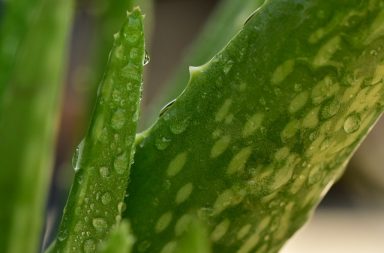Ayurveda doshas are a key part of practicing Ayurvedic medicine for health and wellness. Of course, before you can practice Ayurvedic medicine, you might need to have the Ayurveda doshas explained!
Ayurvedic medicine is over 5,000 years old but is still practiced widely throughout the world today. Whilst the word ‘medicine’ suggests treatment for illness, Ayurvedic practices are rarely used to cure sickness.
In fact, Ayurveda is actually a holistic – whole body – healing practice, and is essentially more of a lifestyle than a medicine. The practice focuses on wellness throughout the physical body, and also the mind.
The Ayurvedic diet is also a prominent feature in this practice, which incorporates Ayurvedic eating principles to compliment your dominant dosha.
Find Out the Ayurvedic Eating Principles!
But what exactly are Ayurveda doshas? And how do you find your dominant dosha?
Well, read on to have Ayurveda doshas explained – and find out which is your dosha!
What is Ayurveda?
Ayurveda is a traditional form of medicine that originates in India. More than a medicine, many refer to Ayurveda as a healing science, that promotes wellness throughout our bodies, energies, and minds.
In fact – the key is in the name! In Sanskrit, Ayur means life and Veda means sacred knowledge, translating to the sacred knowledge of life!
So, how does Ayurveda work?
Well, Ayurveda is more of a lifestyle, than a practice. It focuses on the prevention of ill-health through the balance of the energies within our bodies. It is essentially the recipe to a healthy life!

Photo credit:
Jared Rice via Unsplash
The thinking behind this, is that a happy balance will promote better health. This is better health in our physical bodies, but also in our minds. To get this balance, you focus on diet, sleep, exercise, patterns of thinking and lifestyle choices.
Let’s breakdown the Ayurveda practice and have a closer look!
In Ayurvedic medicine, it is thought that the universe is built up of five elements. These elements are:
- Vayu – air
- Jala – water
- Akash – space
- Teja – fire
- Prithvi – earth
These five elements of nature also make up the elements of energy within the human body. These energy elements in our bodies are also known as doshas.
It is the balance of these energies within our bodies that allow us health and wellness in our lives.
So, how do we balance our doshas?
Well, first you need to find out your dominant dosha! So, let’s explain Ayurveda doshas in more detail!
Ayurvedic Doshas Explained
Ayurvedic doshas are based on the five elements of the universe: water, fire, air, space, and earth. These five elements are found within our bodies. This is through the air we breathe, the food we eat, the water we drink and the space we take up.
In fact, these five elements create the basis for the three doshas. Each of which resonates with two of the elements, just like each of us has our own personality, likes, and dislikes, we each have attributes to one of three doshas.
This dosha is the source of energy through our body. The balance of this dosha contributes to our health both physically, and mentally too.
These three doshas are:
- Vata – reflects qualities of air and space.
- Pitta – reflects qualities of fire and water
- Kapha – reflects qualities of earth and water.
Many things can disrupt the balance of your dosha. This includes a diet that can aggravate your dosha – you can avoid this by following the Ayurvedic diet – stress, or even negative thoughts! Lack of sleep can also upset the balance of your dosha. If you struggle with sleep, you can try sleep-inducing foods as a natural remedy!
Try the 5 Best Sleep-Inducing Foods!
How to best balance your energy depends on your dosha. Each one is managed and balanced in different ways. This reflects the natural elements that creates the dosha.
Of course, you might be wondering which dosha you resonate with most?
Well, we’re going to explain each Ayurveda dosha, and tell you a bit about their energy!
Ayurveda Dosha: Vata
Vata is the dosha that aligns with elements air and space. Individuals that are associated with the Vata dosha are usually slim body types, and are creative, energetic, and impulsive!
So, what describes a Vata dosha? Well, words that describe the Vata dosha are dry, rough, cold, and light. In fact, Vata individuals will display these characteristics in their personalities – balanced or not!

Photo credit: Erik Brolin via Unsplash
That being said, when the Vata dosha is imbalanced, they might feel anxious, suffer with digestive problems, and feel fatigued. So, it is important to keep your dosha balanced!
So, how can you keep your Vata dosha balanced? Well, let’s find out!
- Eat a Vata-friendly diet as guided by the Ayurveda eating principles.
- Keep to a regular routine.
- Stay well rested through early nights.
- Participate in regular, gentle exercise such as yoga or swimming.
- Practice daily meditation.
- Eat in a peaceful environment.
- Engage in grounding activities outside in nature.
If you are a Vata dosha, these are the best ways to keep your mind, body, and energy balanced!
But what can you do to avoid becoming imbalanced? Let’s find out!
To prevent imbalance in your Vata dosha you should avoid:
- Unfriendly Vata foods as guided by the Ayurveda eating principles.
- Eating whilst on the move.
- Lack of sleep and late nights.
- Drinking excessive alcohol or caffeine.
- Breaking out of a regular routine.
- Eating whilst upset or emotional.
So, if you are a Vata dosha, you know the best ways to keep your Ayurveda dosha balanced!
According to Ayurveda, this will help ensure you stay physically and mentally happy and healthy!

Photo credit: Chelsea shapouri via Unsplash
Ayurveda Dosha – Pitta
The Pitta dosha is energy that resonates with elements fire and water. These elements are reflected in the traits of Pitta individuals through sharp, oily, and hot characteristics! As well as this, Pitta doshas are usually of medium build. Often with strong bodies!
Of course, the fire quality of Pitta dosha often needs to be kept in check in Pitta individuals! So, that means taking good care of your energy balance. That being said, a balanced Pitta dosha will have a blessed outlook on life. Yes, Pitta doshas are usually joyful, positive, and intelligent people!
So, how can you maintain this joyous Pitta balance?
Well, you can:
- Eat a Pitta-friendly diet as guided by the Ayurveda eating principles.
- Do calming activities such as walking and reading.
- Avoid stimulants such as coffee or energy drinks.
- Eat in a quiet environment.
- Engage in exercise outdoors such as yoga or tai chi.
For Pitta doshas, the focus is on calming and cooling activities to neutralise the fire qualities in your energy!
Now let’s look at how you can prevent an imbalance in your Pitta dosha!
You should avoid:
- Unfriendly Pitta foods as guided by the Ayurveda eating principles.
- Do calming activities such as walking and reading.
- Getting over-competitive – a common Pitta dosha trait!
- Being over-worked.
- Eating meals when angry or frustrated.
- Drinking excess caffeine.
So, hopefully you can now keep your Pitta dosha balanced, and enjoy full-body wellness!
Ayurveda Dosha Kapha
Kapha doshas reflect the elements of earth and water. These two elements combined often give Kapha doshas qualities that are soft, heavy, stimulating and loving. You will recognise these qualities in Kapha doshas no matter how they are feeling!
So, what else do we know about Kapha doshas?
Well, Kapha doshas are associated with heavier body types, they are also loyal, affectionate, and calm people when their dosha is balanced. And when they are imbalanced? Well, imbalanced Kapha doshas can display signs of depression, low moods, and lethargy.
Well, in that case, let’s learn how to keep a Kapha dosha balanced!

Photo credit: Lisa Hobbs via Unsplash
So, to keep Ayurveda dosha Kapha balanced you can:
- Eat a Kapha-friendly diet as guided by the Ayurveda eating principles.
- Keep on top of emotions and underlying feelings.
- Practice boundaries and self-care.
- Eat meals in a loving and caring environment.
- Make time for activities that release feelings such as meditation and journaling.
- Get early nights and rise early – and avoid naps!
Yes, Kapha is very much a loving, caring dosha, so it’s important to focus on expression of emotions!
But what can you avoid to prevent dosha imbalance?
Well, where possible, you should avoid:
- Unfriendly Kapha foods as guided by the Ayurveda eating principles.
- Cold or damp climates.
- Too much time indoors.
- Indulging in sweets or unhealthy foods.
Well, if you are a Kapha dosha you have everything you need to keep your loving, caring energy in check!
Hopefully, now that the Ayurveda doshas have been explained, you can recognise your dominant dosha! Not only that, you can work on your Ayurveda dosha and make sure you stay happy and balanced in day-to-day life!
Ayurvedic medicine is one of many popular natural forms of wellness. In fact, natural beauty is also becoming incredibly popular too. Did you know you can use Manuka honey as a DIY facemask? Yes, there are all forms of alternative skincare out there! All of which provide natural goodness and properties for our bodies!
How to: make DIY Manuka honey face mask!


